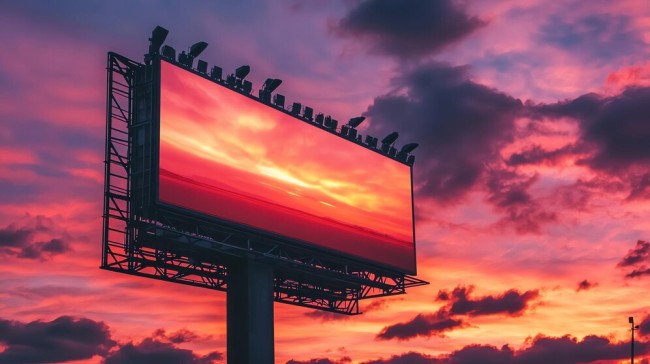
Have you ever been to a concert, event or a football match and found yourself glued to a massive screen over the crowd? That’s a Jumbotron. You’ve probably seen them at stadiums, arenas, and outdoor festivals, broadcasting live footage of the action, replays, or even showing flashy ads.
Jumbotrons are the unsung heroes of large events, they keep everyone in the loop. But how exactly do these giant screens work? Let’s break it down.
What Exactly Is a Jumbotron?
A Jumbotron is a huge screen that displays live video, advertisements and other content to a large audience. These screens are often placed in sports arenas, concert venues, or any place where the crowd is too big for everyone to see what’s happening on the main stage.
The key thing here is size. They’re meant to be seen from long distances and by thousands, sometimes tens of thousands, of people at once.
Originally a product of Sony, the term “Jumbotron” has become a catch-all for any large video display, though technically, many of these are now made by other manufacturers. Think of it like calling every tissue “Kleenex.” The brand name stuck, even when competitors came onto the scene.
But despite its size and presence, a Jumbotron doesn’t function like your living room TV. It’s much more complex than that. And it needs to be, given the demands of displaying clear, crisp images in enormous spaces. Now, let’s dig into how they actually work.
How Does a Jumbotron Work?
At first glance, you might think a Jumbotron is just a bigger TV, but that’s not quite right. While a traditional TV uses a single screen to display an image, a Jumbotron is made up of thousands of smaller LED modules (or pixels) that work together to create one giant picture.
1. LED Technology
The secret behind Jumbotrons is LED (Light Emitting Diode) technology. Each pixel in a Jumbotron is a tiny LED that lights up in different colors to create the images you see.
LEDs are perfect for this job because they’re bright, durable, and don’t burn out easily, which is key for something that needs to perform under all kinds of weather conditions and be visible from far away.
LEDs also use less energy than other display technologies, which is a big deal when you’re lighting up an entire stadium. And since they’re so bright, they’re easy to see even in direct sunlight – ever notice how clear the screen looks at an outdoor football game?
2. Modular Structure: Building a Giant Screen
A Jumbotron isn’t just one massive screen. It’s made up of smaller panels, or modules, each containing a grid of LEDs. These modules are stacked together to create the massive screens we see at big events.
Because of this modular setup, you can make a Jumbotron as big (or small) as needed, depending on the venue.
Each module operates independently but works in sync with all the other modules to display the correct part of the image or video.
If one module malfunctions, it can be replaced without tearing down the whole thing. That’s a big reason why Jumbotrons are so reliable – they’re designed for easy maintenance and longevity.
3. Video Processing: Managing the Feed
Alright, so we’ve got the LEDs and the modules, but how does the Jumbotron know what to display? Here comes the video processing systems. These systems take live video feeds, pre-recorded ads, and graphics, then scale and process them so they fit perfectly on the screen.
Let’s say you’re at a basketball game, and there’s a camera pointed at the players. That live feed goes through the video processor, which breaks it down into smaller chunks, each corresponding to a specific section of the Jumbotron.
The processor ensures that everything stays sharp and in sync – so when LeBron dunks, you see it on the screen in real-time, crystal clear.
There’s also software that controls when and how things are displayed on the screen. It’s the reason why the scoreboard, advertisements, and live video can all be displayed on different parts of the screen at once. Pretty neat, right?
Why Are Jumbotrons So Popular?

Jumbotrons are more than just oversized TVs – they’re an essential part of the fan experience. Think about it: how many times have you been to a game or a concert and relied on the Jumbotron to catch a closer look at the action?
They offer the best of both worlds: live action and instant replays. Miss that crucial touchdown? Don’t worry, the Jumbotron got you covered. Want to see the band’s lead singer up close, but you’re sitting way in the back? The Jumbotron is basically a front-row ticket for everyone in the audience.
Another reason Jumbotrons are a hit is advertising. Big brands love them. Because they’re so large and attention-grabbing, advertisers can guarantee that their ads will be seen by thousands of people at once.
It’s a win-win: the audience stays entertained during breaks, and advertisers get maximum exposure.
The Evolution of Jumbotrons
Jumbotrons didn’t start out as sleek as they are today. The first ones were clunky, low-resolution, and used cathode-ray tube (CRT) technology, similar to old TVs.
Sony introduced the first Jumbotron at the 1985 World’s Fair in Japan, and while it was revolutionary at the time, by today’s standards, it was nothing compared to the ultra-sharp displays we see now.
The real game-changer came when manufacturers switched from CRT to LED technology in the late ‘90s and early 2000s. LEDs are more energy-efficient, can be packed closer together (which improves resolution), and last longer than older tech. Now, Jumbotrons are sharper, brighter, and more efficient than ever before.
And it’s not just sports arenas anymore. You see these huge screens in Times Square, at outdoor music festivals, and even at political rallies. If there’s a large crowd that needs to see what’s happening, a Jumbotron is likely there.
What’s Next for Jumbotrons?
You might be thinking, “Can Jumbotrons get any bigger or better?” The answer is yes – technology never stops evolving. While the concept of a giant screen isn’t going anywhere, we’re likely to see more integration with things like augmented reality (AR) and virtual reality (VR) in the near future.
Imagine going to a concert where the Jumbotron not only shows the live footage but also adds interactive elements or special effects that enhance the show. Or attending a game where you can get real-time stats on the screen, overlaid on the players as they move.
Another exciting area is flexible displays. Instead of flat screens, we might start seeing Jumbotrons that can curve or wrap around structures, creating an even more immersive experience. The future is bright—literally!
Final Thoughts
So, the next time you’re at a big event and your eyes are glued to that massive screen, you’ll have a deeper appreciation for what goes on behind the scenes. A Jumbotron isn’t just a screen – it’s a marvel of technology that brings the action to life for everyone in the crowd.
And who knows? The Jumbotron of tomorrow could be even more mind-blowing than what we’re seeing today. Keep watching.
Also Read:
